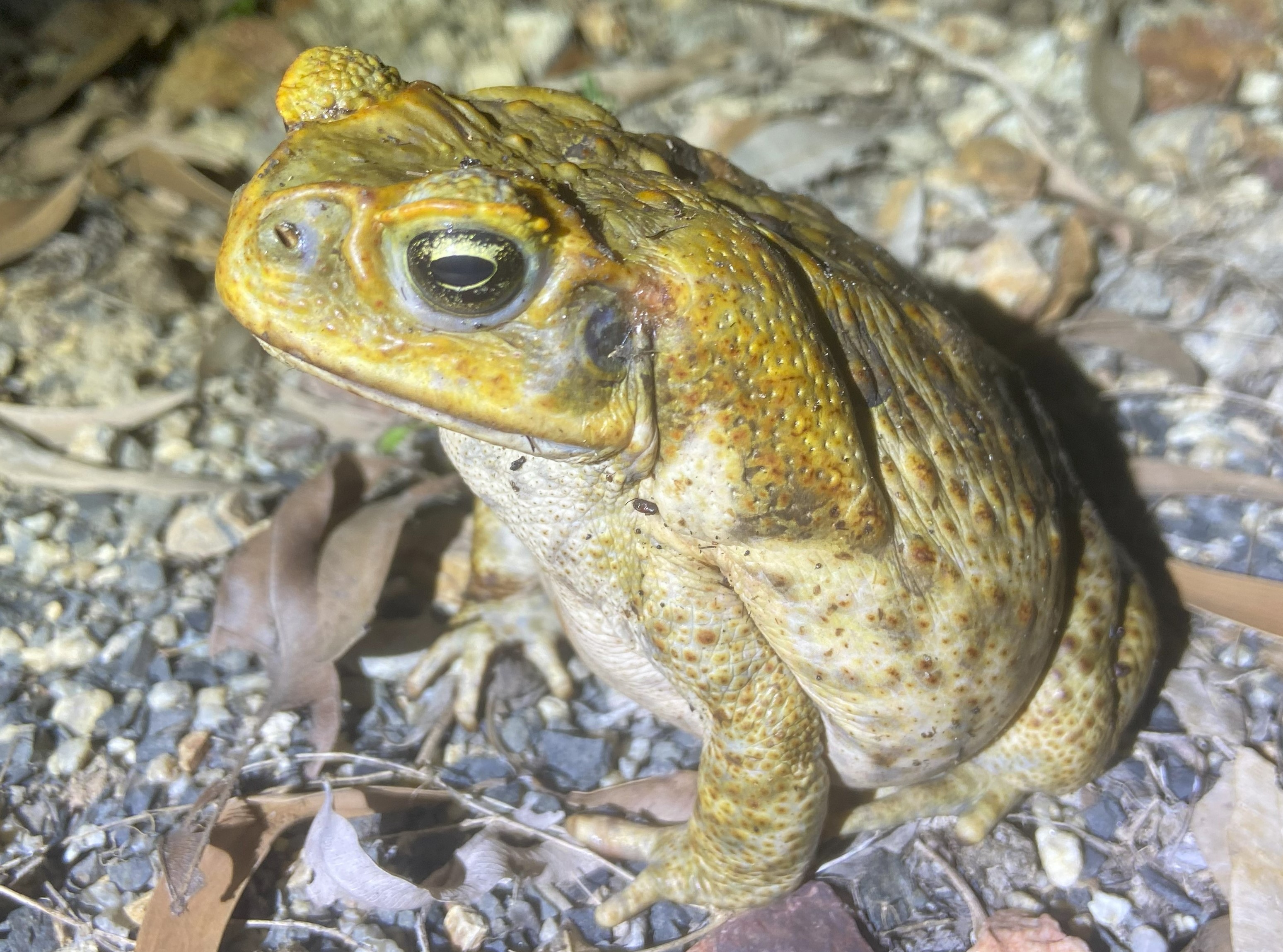Media release
From:
New Curtin University research has found invasive cane toads are on track to reach Western Australia’s Pilbara region within the next 10 to 20 years, threatening to cause widespread losses among native species and significant cultural and economic harm.
The study, published in Scientific Reports, predicts that without containment efforts, the toxic amphibians will colonise up to 75 per cent of the Pilbara within three decades, putting 25 native species at risk of serious population declines. These include several species of native marsupial predators like northern quolls, ghost bat and kaluta, as well as frog-eating snakes, blue-tongue skinks and goannas.
Of these, nine native mammals and reptiles are expected to become newly listed as threatened species and push the already vulnerable ghost bat to a higher threat category if the toads are not properly managed.
Lead author Dr Judy Dunlop, from Curtin’s School of Molecular and Life Sciences, said there were simple steps that could prevent the invasive pest from using dams as stepping stones into the Pilbara.
“The Pilbara region’s permanent water sources make it an ideal habitat for the invasive species, which have already devastated native wildlife like quolls, goannas, and snakes across Australia's iconic Kimberley region,” Dr Dunlop said.
“Toads are approaching a naturally dry part of the country south of Broome where the Great Sandy Desert meets the ocean. Here, the only water accessible to them is cattle watering points.
“If these points are dams, toads will access and use them as stepping stones to make their way through the desert zone but simple upgrades to concrete tanks and troughs will make them inaccessible to toads.”
Co-author Professor Ben Phillips, also from Curtin’s School of Molecular and Life Sciences, said the findings highlighted the urgent need to establish a “toad containment zone” to stop their southward march.
“By establishing a 150km long ‘toad containment zone’ which limits toad access to artificial waterpoints, we may be able to prevent the invasion and push the species back to the top of the barrier – much like how firebreaks are used to halt the spread of bushfires by removing fuel and creating controlled boundaries,” Professor Phillips said.
“There is no doubt that the arrival of toads will cause catastrophic declines in culturally important species, which will be felt by the Traditional Custodians of the Pilbara. The animals most at risk - such as the goanna and bluetongue skink - are culturally important to traditional owners for food, storytelling and bushtucker practices.”
Professor Phillips said the findings may also have implications for WA’s mining sector, which may face increased financial costs and new conservation requirements due to the changing status of local fauna if the toads invade.
“Our study shows that implementing a model to control the invasion of cane toads could deliver significant environmental, cultural and economic benefits for Western Australia’s Pilbara region and beyond,” Professor Phillips said.
The work was supported by BHP Social Investments.
The full paper is titled, ‘Quantifying the potential impact of the cane toad (Rhinella marina) on biodiversity in Australia’s Pilbara region’ and can be found online here – once published.



 Australia; WA
Australia; WA


